Our next course was an escape from the realm of 2-dimensional surfaces. In plastic arrangement our teacher was the artist – and a delightfully friendly person – Kirsi Tapper. She was a great instructor, and we got to experiment with many different techniques.
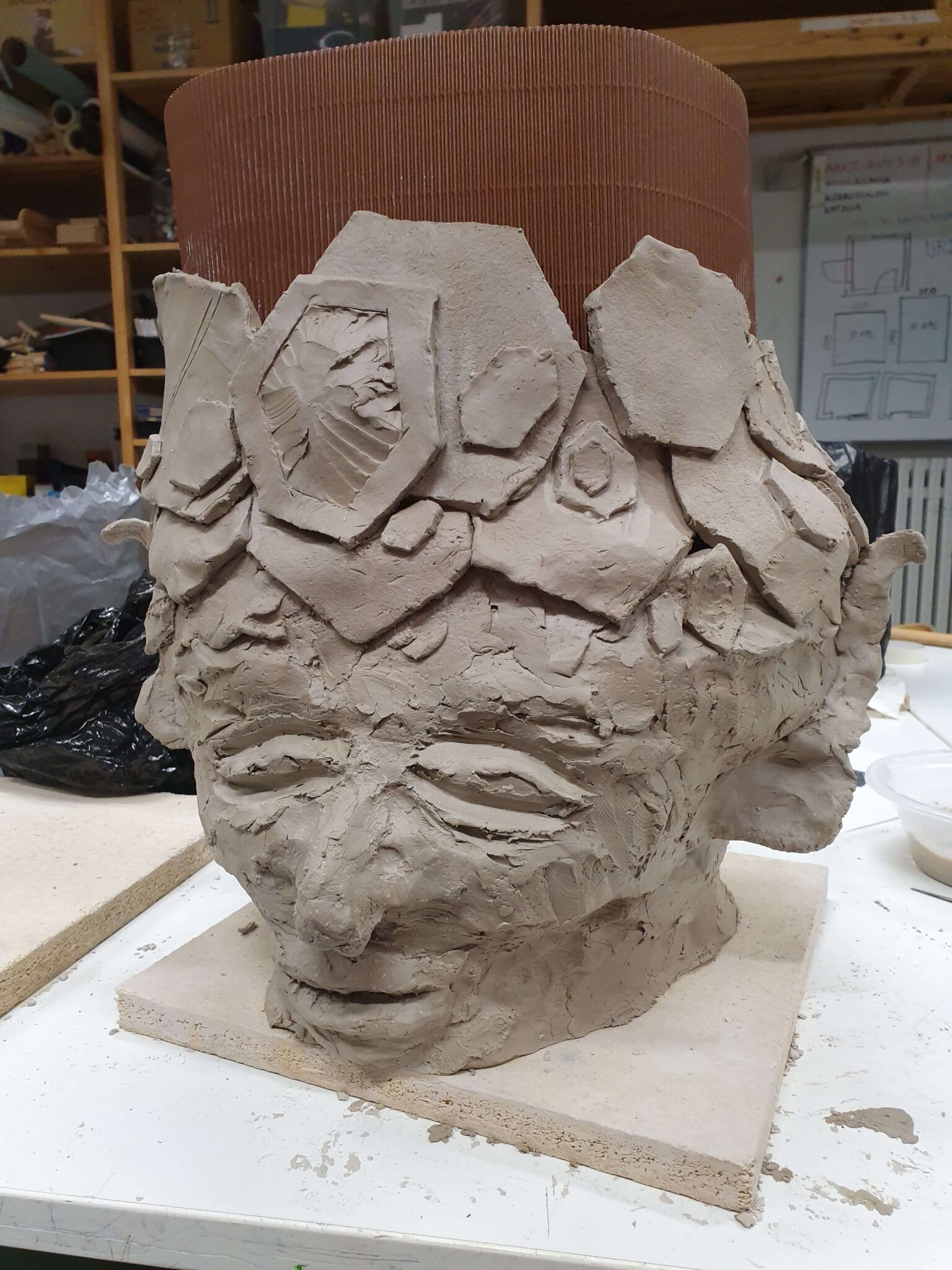

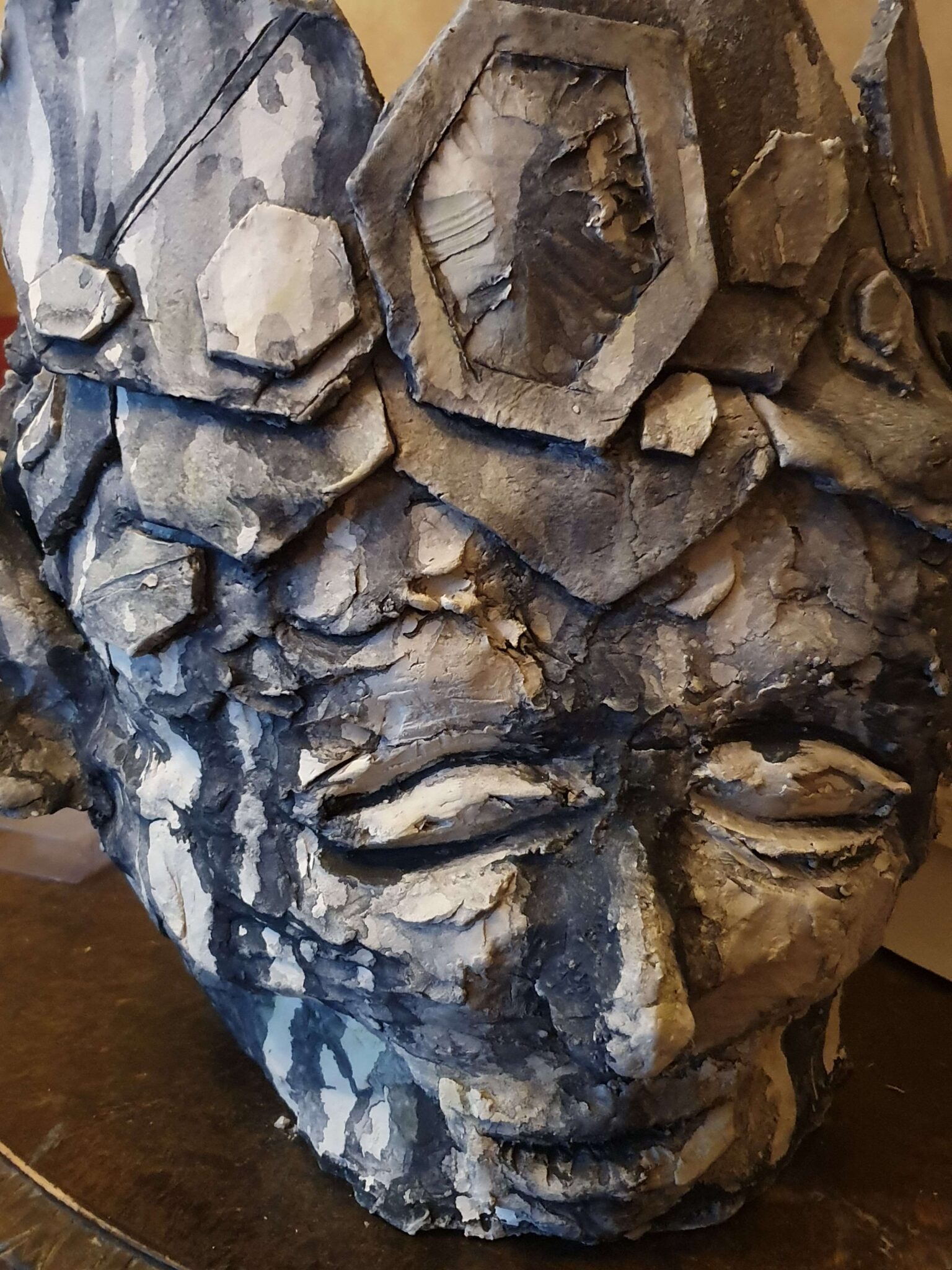
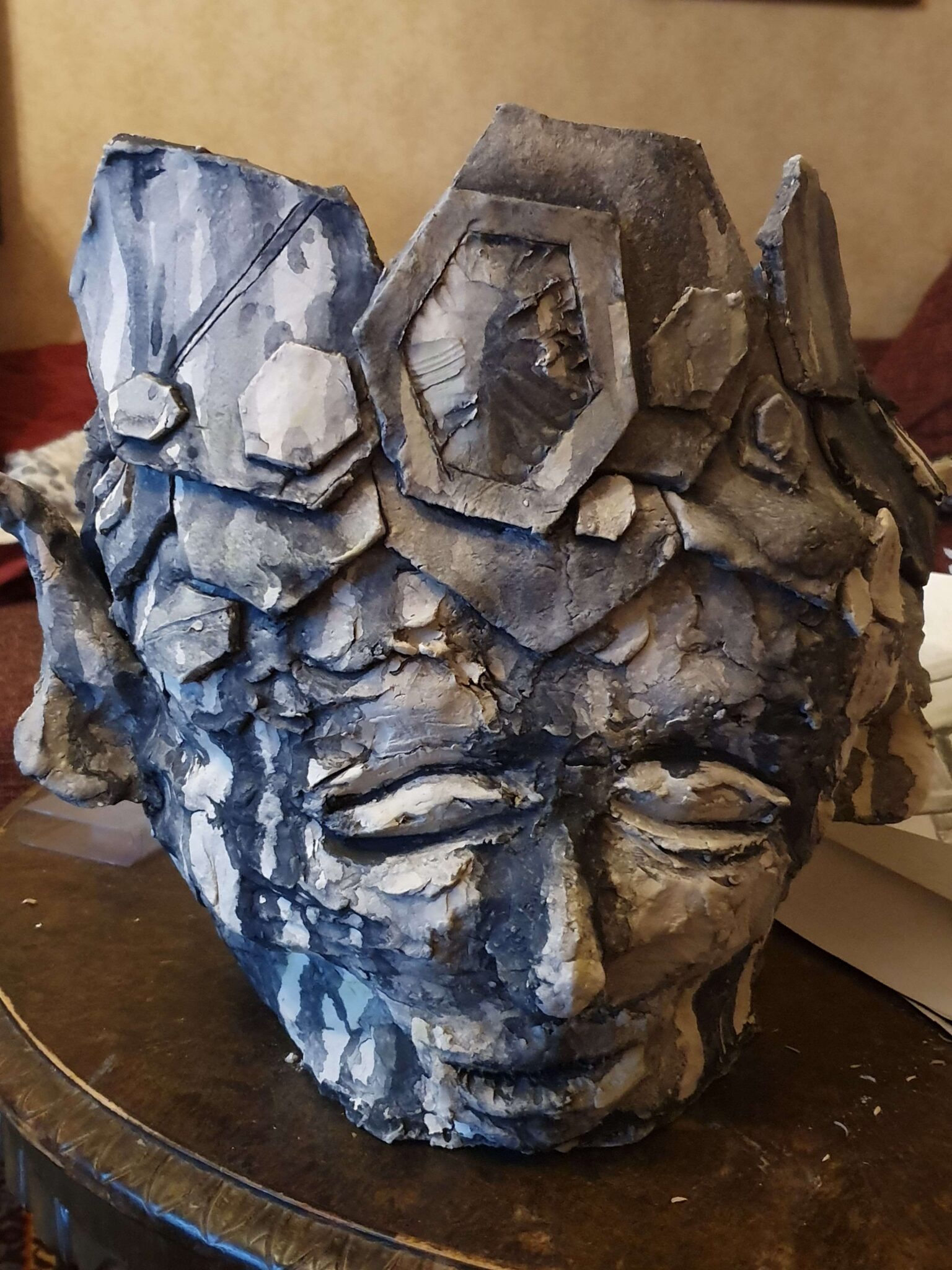
Due to the nature of the course and the medium used, this was both the piece I began working the first and the one I finished last. We had to wait for our ceramics to be heated in the oven for them to harden so we could finish the surface: mine was still hot on the final day when I got to finishing. The theme we were given was a queen taking a bath, from the neck up, and the medium is ceramic with an optional surface finish. I chose a rather fairytale-like subject, the old venerable queen bee that has left the hive, on her final swim. The hexagonal shapes that make up the crown are a nod to the geometric creations of bees, and the elf-like ears to the fairytale-like subject matter. The colouring and weathering have been created using liquid charcoal, in washes of various consistencies – it creates a striking effect that I really like, and that fits both the themes of water and age. I am really proud of this work.

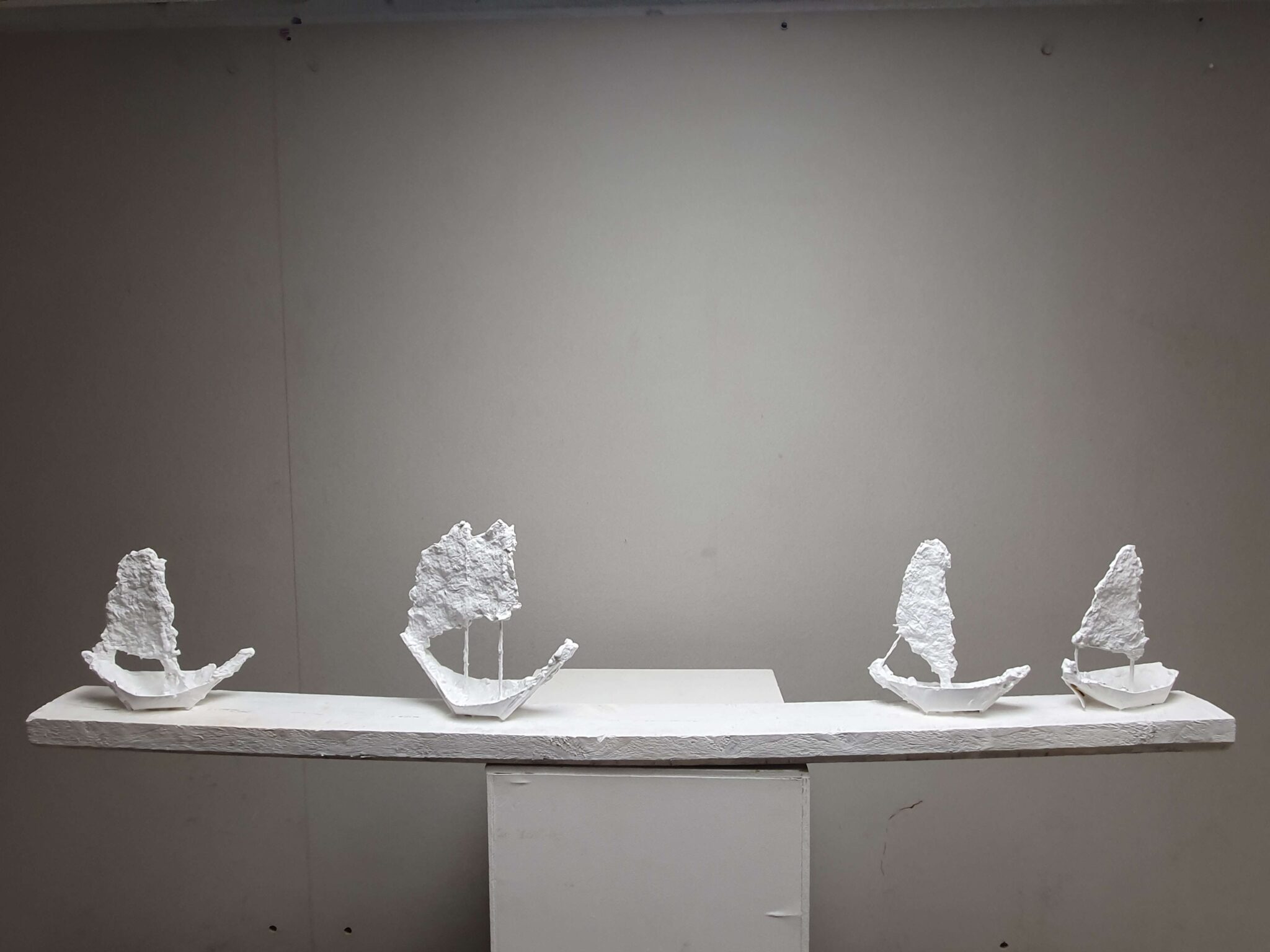


Our second work was making a poppy seed pod out of papier-mache, but mine still remains unfinished due to time constraints (the stem isn’t attached). Regardless, I’m more proud of The Morning Mist, above. It’s likewise made out of papier-mache, on a wooden base. I love how effective the simple arrangement is, and the shadows it casts double the number of ships in a beautiful manner. It creates a wonderful mood. The material took a while to get used to, but it creates a pleasant, rough, and unhewn surface texture once dry.


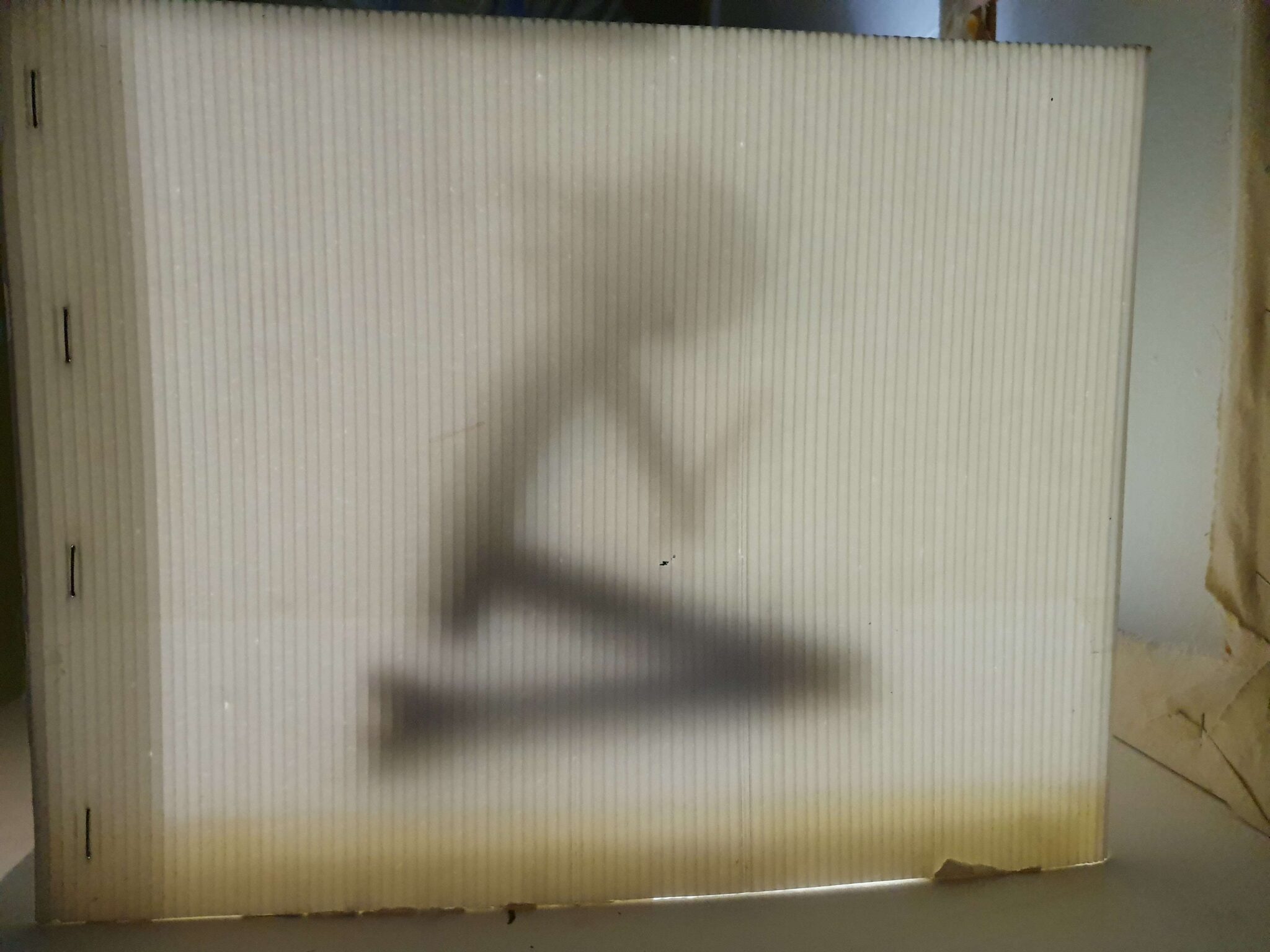

Speaking of shadows, our next exercise was to create one. Well, to create a wooden sculpture that would cast a shadow, with the shadow itself being the important part in the artwork / exercise. The rather simple, and frankly voodoo-doll-looking sculpture is what I came up with: I do like how it’s gestural, and as such the shapes read rather well. I just feel like there’s something.. Traffic-sign-esque about it that I’m not a huge fan of. Overall the exercise was a success, though I’m not sure how I’m supposed to display this in my home, as it requires a rather specific lighting to look presentable.
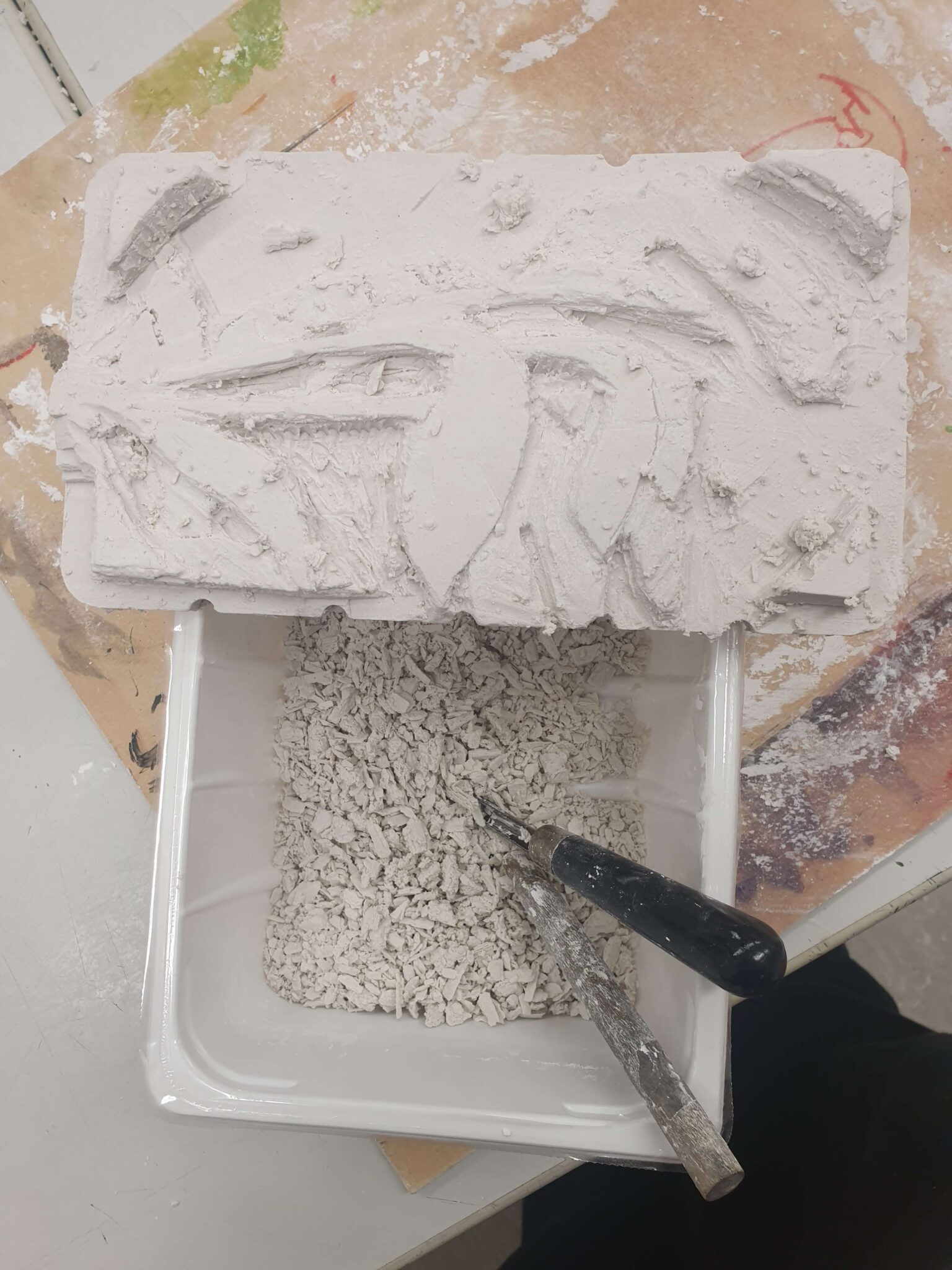
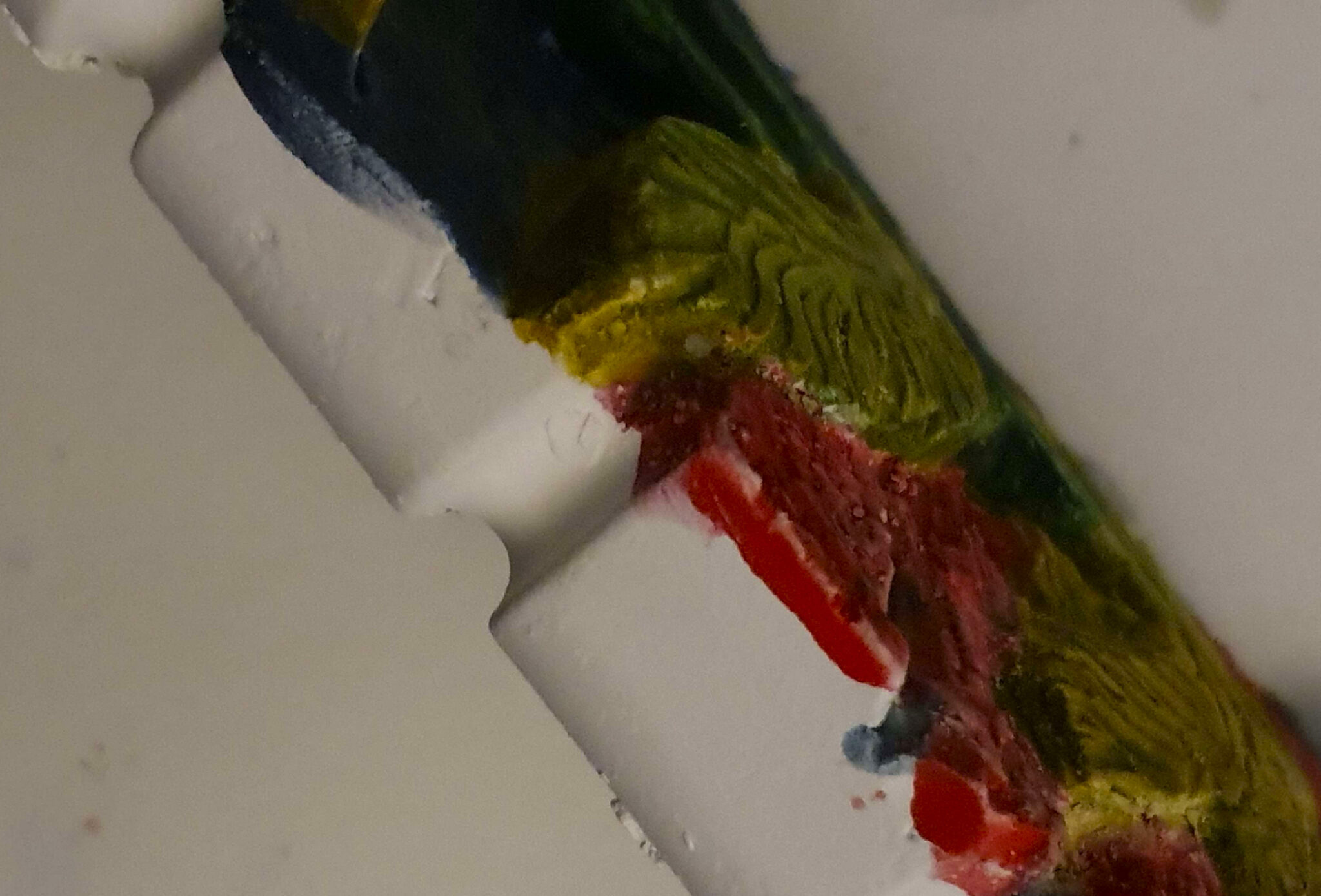
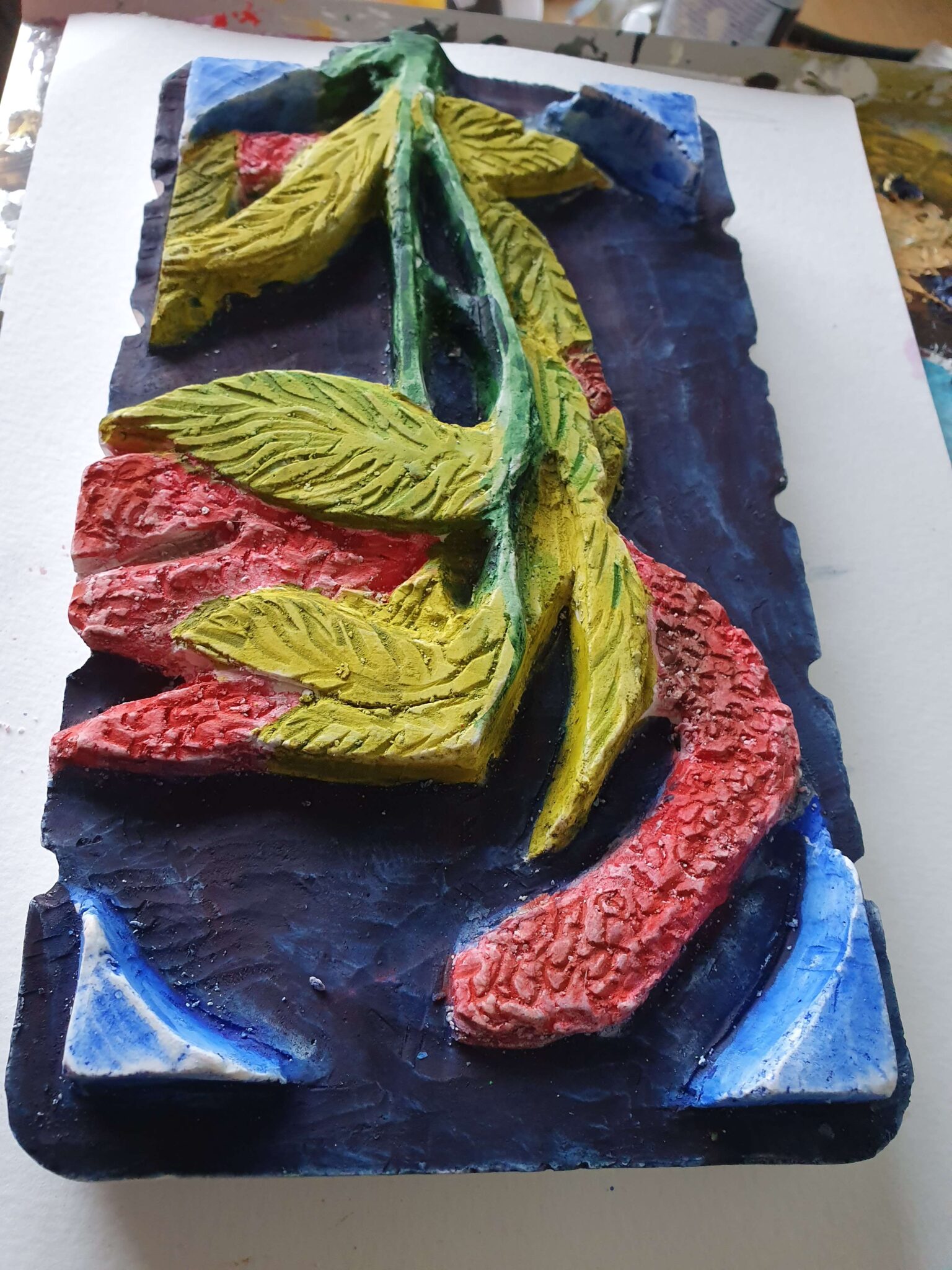

Ah, gypsum – the material of my nightmares. Not only is it dusty, it also likes to crack, and is generally unpleasant to work with. The resulting work isn’t particularly durable either – I’m constantly paranoid I’m going to drop this one while handling it. I was not very happy with it at any point during the creation process – the sculpting job itself isn’t particularly impressive – but after I decided to go experimental and paint it I was very happy with the results! I was afraid the watercolours I used to paint the sculpture would melt the gypsum, as it is slightly water-soluble, but my fears turned out to be (mostly) unwarranted: the water absorbed into the dry sculpture too fast to be able to dissolve anything, and the resulting surface is bright and pleasant to look at. The texture of the sculpt is accentuated and elevated by the paint. It almost makes me want to create another work in gypsum.
A delightful course, even if slightly short, but I am honestly quite happy with all the works I managed to finish. Working with different materials also felt much more tangible than merely painting on a canvas, and getting to work with your hands is always a pleasure. The ceramic sculpture remains my favourite – clay feels great in your hands as you work it – but I have to admit that painting the gypsum plaster relief was very enjoyable.